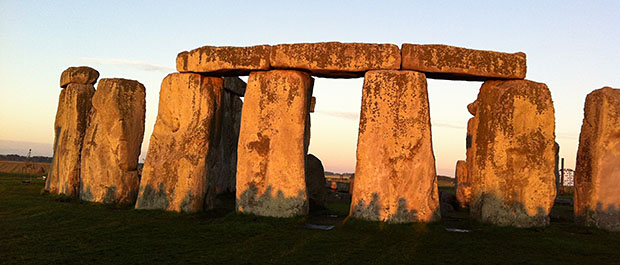Stonehenge
November 2020 update – For tickets and more information about the safety measures you can expect when visiting, please see https://www.english-heritage.org.uk/stonehenge
The reasons for its creation are debatable – some believe it to be a temple for sun worship, some think it is a calendar and others believe it has more alien origins. Whatever the reasons for building it, the monument is as awe inspiring now as it has ever been.

The mighty stones were transported from far away and no one is sure how the people of the time managed to move such massive structures. There are two types of stone used in the construction of Stonehenge – the Sarsen stones (a sandstone) and the bluestones. The Sarsen stones are found locally but even so they weigh 20 – 30 tonnes each. They form the outer ring. The inner ring is the volcanic bluestone which has been found to come from Wales. These stones weigh 2 – 3 tonnes each and transporting them from Wales to Salisbury Plain was clearly no easy task.
Stonehenge started as a simple earthwork enclosure, but it has been added to over the years. The lintelled stone circle that we are familiar with today was erected in the Neolithic period, around 2,500 BC. Nearby burial mounds have been dated to the early Bronze Age (2,200–1,500 BC).
The surrounding landscape is also very interesting.
Usually you have to pay to enter the Stonehenge site but English Heritage provide free managed access during the summer solstice, winter solstice and the spring and autumn equinoxes.
Related:
New Stonehenge visitors centre now open